Beijing
Contemporary Beijing is a permanent construction site and home to some 14 million inhabitants all seemingly stuck in traffic. Still, the city is an epic marvel, astonishing in scale and breadth of history. From a base on the Forbidden City explore Chongwen and the Temple of Heaven to the south, the ancient hutongs to the north, the country's finest contemporary art and shopping in Chaoyang to the east, and the Great Wall to the far northeast.
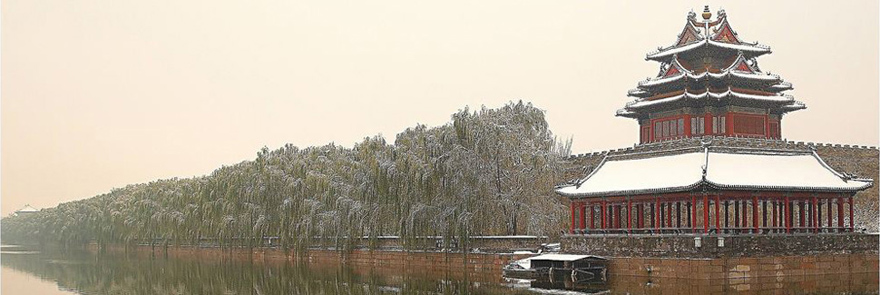
Recommended Activities & Highlights
National Museum of China
The world's largest museum, The National Museum of China, in Beijing, has just opened its doors (April 2011). The result of a decade-long, $380-million project that combined the Museum of Chinese History and the Museum of the Chinese Revolution. The more than one million artifacts in the museum's collection provide an epic survey of Chinese history, from Yuanmou Man, who walked the land 1.7 million years ago, to current president Hu Jintao. The museum has over 2 million square feet of galleries, three times the size of the Louvre in Paris.
Huguang Theater
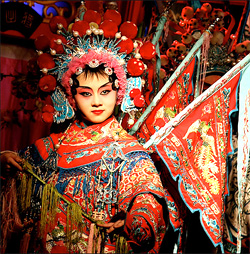
Classic "Peking Opera" performances employing colorful costumes, loud gongs, flashy make-up and intricate dances. Sit in the center of the ground floor aead of the front row to allowing reading the subtitles. Hufang Lu 3, Xuanwu District.
Tiantan Park (Temple of Heaven)
Arrive early morning to see clusters of Beijingers taking rumba lessons, doing tai chi, kicking shuttlecocks, and playing chess, dominoes, cards, and Chinese instruments. Ask us to arrange tai chi with the locals.
Tiantan and Jingshan Parks
In these parks, arrive early morning to witness clusters of Beijingers taking rumba lessons, doing tai chi, deftly kicking shuttlecocks, and playing chess, dominoes, cards, and traditional Chinese instruments. Jingshan Park is behind the Forbidden City. Not only is it an oasis of flowers and trees, it also boasts a breathtaking view of the Palace from the top of one of Beijing's very few hills, which was constructed from earth that was dug up to make the moat of the Forbidden City.
National Center for the Performing Arts
Featuring international performances suc as the London Symphonoy Orchestra. Click here to check the performance calendar.
Cooking class
After breakfast, enjoying a half-day cooking class based on northern cuisine (8:30am to 1:30pm). The class begins with a local market visit in the hutong area learning about and shopping for ingredients, followed by demonstration of sauces and seasonings including ubiquitous soy sauce, followed by preparation of dishes, learning how to use cleavers and the wok. At the conclusion of class, dining on your creations.
Hutongs
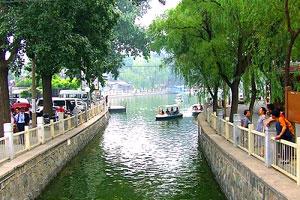
Hutongs once dominated the city, but in recent years many have been leveled in the name of modernization. In the hutongs see cobblers repairing shoes, grocers delivering produce, and residents preparing lunch outside (there are often no indoor cooking or plumbing facilities). One hutong, Nanluoguxiang in the Gulou, or Drum and Bell Tower, district, has several kilometers of shops, galleries and cafés that range from the chic to the kitschy.
Donghaumen
Night market in Wangfujing, where you will see cooks whipping up unusual "delicacies" such as starfish, centipedes, lizards (on a stick), crickets, and scorpions— although there are plenty of less exotic snacks to choose from if you feel like sampling, but are not too adventurous.
Factory 798
A Bauhaus industrial complex in Beijing's northeast contemporary Dashanzi Art District. Built in the 1950s by East German engineers, is now a collection of hip galleries, cafés, bars and restaurants. (More Information)
Caochangdi — which means “grasslands” — is a fertile breeding ground for modern artists. Compared with the more commercialized 798 Art Zone, the neighborhood is an epicenter of creativity, having attracted key galleries and studios with its low rents and "purer" artistic atmosphere. It is essentially an unassuming village, inhabited by illustrious artists and rural migrants, the latter more concerned with making ends meet than deconstructing Dadaism. Its dichotomous setting is what lends the district its edge and distinct character. Caochangdi galleries:
- Pekin Fine Arts gallery, Much of Chinese contemporary art is an amalgamation of age-old techniques with modern-day themes. Artist Chen Shaoxiong, who held a solo show at Caochangdi’s Pekin Fine Arts gallery, created traditional Chinese ink paintings out of anti-war photographs that he found online, in a bid to humanize and elicit empathy for peace movements. www.pekinfinearts.com
- The Three Shadows Photography Art Centre is the first contemporary art space dedicated to photography and video art in China.
- The Red Brick Galleries’ industrial brick-and-concrete structures provide the perfect neutral backdrop for their star attractions — avant-garde works of modern art.
- Future superstars of modern art are given a platform at Pekin Fine Arts, a breeding ground for up-and-coming Asia artists.
Calligraphy Demonstration & Lesson
During this class on pleasant Houhai Lake, learn the ancient art of writing Chinese characters with the grace and elegance Both fun and creative, calligraphy requires you to use your mind and your body to shape the characters. You’ll learn the correct way to hold the brush and how to draw some basic words, and you’ll also get a calligraphy kit to take home. About one hour.
Shopping
Besides these main markets, consdier the Back Lakes bohemian enclave, and Dashanzi Art area featuring contemporary art galleries, cafés, and performing arts spaces.
Panjiayuan Market
Called a "once-in-a-lifetime shopping paradise," Beijing's large open-air market at Panjiayuan with over 3,000 stalls featuring Chinese arts, crafts, souvenirs and culture icons all in the heart of the city. Stall owners come from twenty-four provinces around China to sell their wares. The range of goods is excellent, but compare and bargain. Panjiayuan Market is best on weekends and early morning departure required. Southwest of the Panjiayuan Bridge, on the southern part of Third East Ring Road. It's slightly off the beaten path — though only a 15-minute taxi ride from the middle of town — and well worth the trip.
Donghuamen Night Market (Northern end of Wangfujing)
For the adventurous culinary traveler. Here see cooks whipping up unusual local delicacies such as starfish, centipedes, crickets, and scorpions— although there are plenty of less exotic snacks to choose from.
Dining
Da Dong Roast Duck Restaurant
No trip to Beijing is complete without eating duck. This place is world famous for it's roasted Peking Duck. 1-2/F, Nanxincang International Plaza, 22A Dongsishitiao, Dongcheng District.
Accommodation
Waldorf Astoria
The Waldorf Astoria Beijing, opened March 1, 2014 adds a sumptuous 176-room addition to the handful of Beijing luxury hotels. With an exceptional location in the heart of downtown Beijing, next to Wang Fu Jing, the famous high-end walking shopping district, across from the Peninsula Hotel, walking distance of Tiananmen Square, and just two blocks west of the Forbidden City. Nearby is also a 700-year-old hutong neighbourhood.
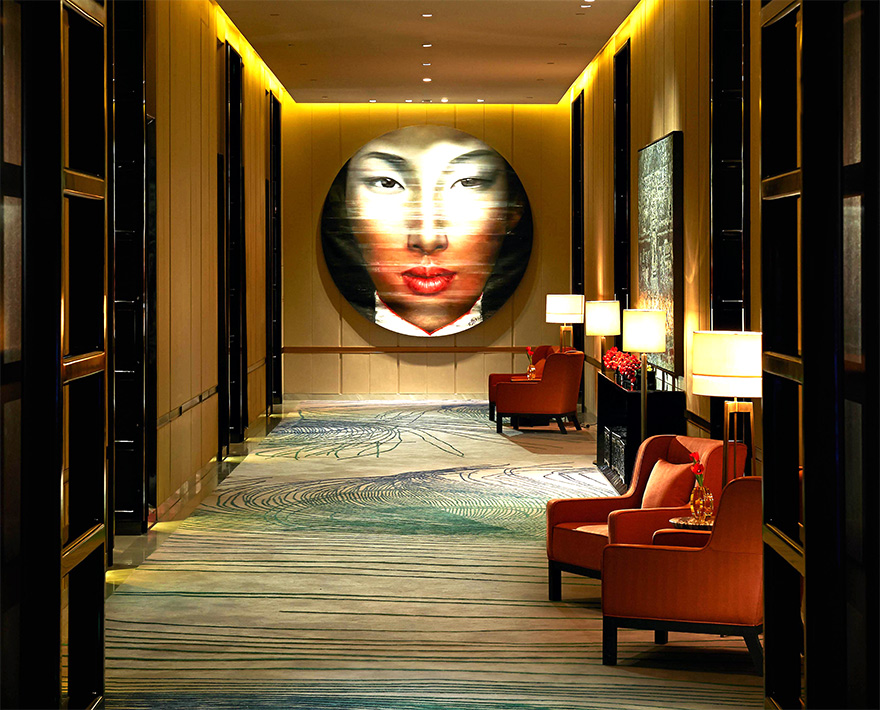
Read more about the Waldorf Astoria
Readings
On China by Henry Kissinger, published 2012
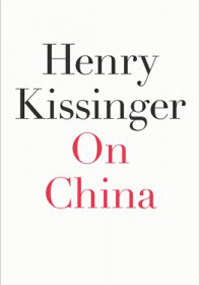
"Drawing on forty years of intimate acquaintance with the country and its leaders, Henry Kissinger reflects on how China’s past relations with the outside world illuminate its twenty-first century trajectory. In this sweeping and insightful history, Henry Kissinger turns for the first time at book length to a country he has known intimately for decades and whose modern relations with the West he helped shape.
On China illuminates the inner workings of Chinese diplomacy during such pivotal events as the initial encounters between China and tight line modern European powers, the formation and breakdown of the Sino-Soviet alliance, the Korean War, and Richard Nixon’s historic trip to Beijing. With a new final chapter on the emerging superpower’s twenty-first-century role in global politics and economics, On China provides historical perspective on Chinese foreign affairs from one of the premier statesmen of our time."
Side Excursions
Xi'An—The Terracotta Warriors
Medical
Beijing International SOS Clinic
Kunsha Building, Wing 1, Suite 1435, 16 Xinyuan Li. Chaoyang. Tel: 6462 9112 or 6462 9100 (24 hours).

